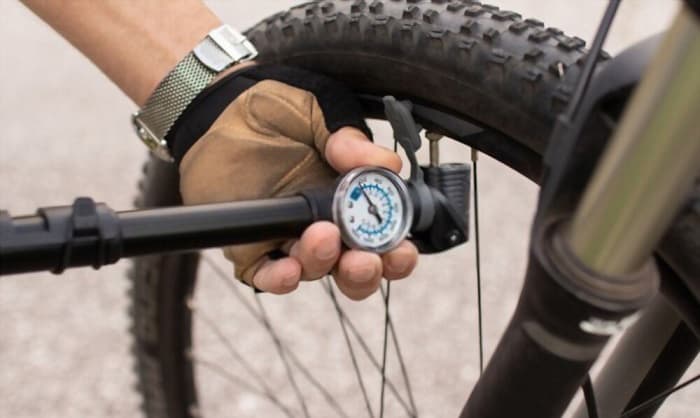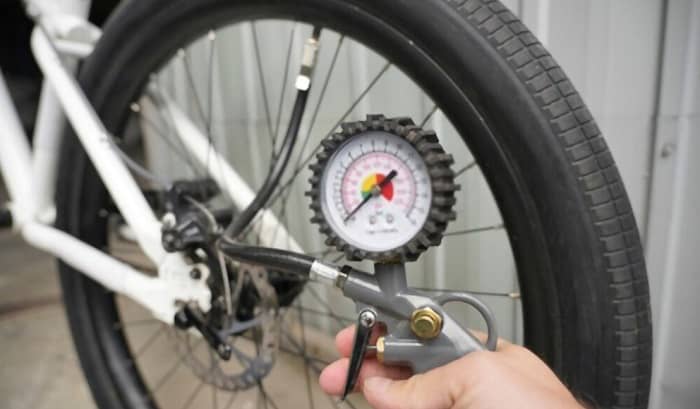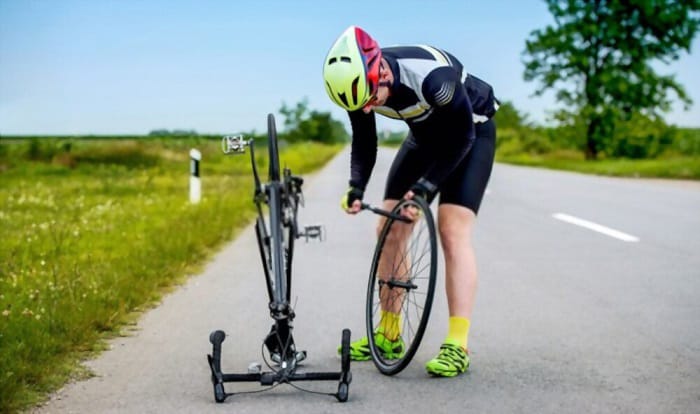You may be wondering about the relationship between the pressures inside and outside a bike. So, what is the difference between the pressures inside and outside a bicycle tire called? It’s what we refer to as the gauge pressure. It is measured by Pounds Per Square Inch (PSI).
Whenever you fill your bike’s tires with air, a measuring tool called a tire gauge will measure this pressure. Though the tire gauge will automatically calculate the gauge pressure for you, it is necessary to know where the numbers are coming from.
Table of Contents
Factors Affecting Gauge Pressure
Gauge pressure is defined as the pressure of a system when it is above atmospheric pressure.
Several factors affect a bicycle tire’s gauge pressure. Since gauge pressure is a kind of pressure, it is essential to note the relationship between area, force, and pressure.
Pressure is affected by both area and force, then which entails that gauge pressure is also affected by these two factors.
But, since this article is meant to focus on gauge pressure, we will name the specific factors affecting this kind of pressure as seen on the tires of bikes. Also, we will discuss some tips on calculating the recommended bike tire PSI in detail.
In a bike, tire gauge pressure refers to the difference between a tire’s inside and outside pressure. These two factors will be further discussed in this article with the proper scientific terms.
Factor #1: Absolute Pressure
Now that you’ve learned the factors that affect all kinds of pressures, it’s time to discuss what factors specifically affect the type of pressure called gauge pressure.
When calculating gauge pressure, absolute pressure is one of the two factors included. Absolute pressure is defined as the sum of gauge pressure and atmospheric pressure.
The reading on a tire gauge connected to a tire increases if the absolute pressure inside the tire also increases.
Factor #2: Atmospheric Pressure
Since we live on Earth, everything – living and nonliving, experiences atmospheric pressure. Atmospheric pressure is calculated as the difference between gauge pressure and absolute pressure.
If you already have experience using a tire gauge on a flat tire, you will notice that the reading is 0. This is because it is meant to read 0 when placed in atmospheric pressure and greater than 0 when the pressure in the tire is greater than atmospheric pressure.
Mountain bikers need to understand that as they bike up a mountain, tire gauge pressure increases because the atmospheric pressure decreases.
Pounds Per Square Inch (PSI)
Based on the absolute pressure, you can know the right PSI or, in other words, pound-force per square inch for your bike’s tires.
You simply need to subtract the current atmospheric pressure from the absolute pressure inside the tires, and voilà – you have successfully calculated the recommended PSI for your bike’s tires.
Pgauge = Pabs – Patm
Therefore, as the outside air pressure decreases, gauge pressure increases.
It is essential for bikers, especially mountain bikers, to check the tire pressure gauge frequently to ensure safe and smooth rides.
Here’re the ideal bike tire pressure gauge we should know about:
- Road tires: 80 – 130 (psi)
- Mountain bike tires: 25 – 35 (psi)
- Hybrid tire: 40 – 70 (psi)
Conclusion
After reading through this article, you will associate terms like tire gauge pressure in answering the question, “what is the difference between the pressures inside and outside a bicycle tire called?”
Then, you can move on to the factors that affect the pressure in general: force and area. Afterward, knowing how to calculate tire gauge pressure or the recommended PSI is also important as you learn absolute pressure and atmospheric pressure.
With this important information about tire gauge pressure, make sure you purchase the right product and check for suitable bike tire pressure.

“I ride my bike to work for years, but is that enough? Our carelessness towards our surroundings has taken a toll on the environment. And now, everyone is responsible for changes; even the most minor contribution is counted. With this hope and spirit, I started with my partner to establish Biketoworkday to help more individuals commute to their work sites on their bikes.”



